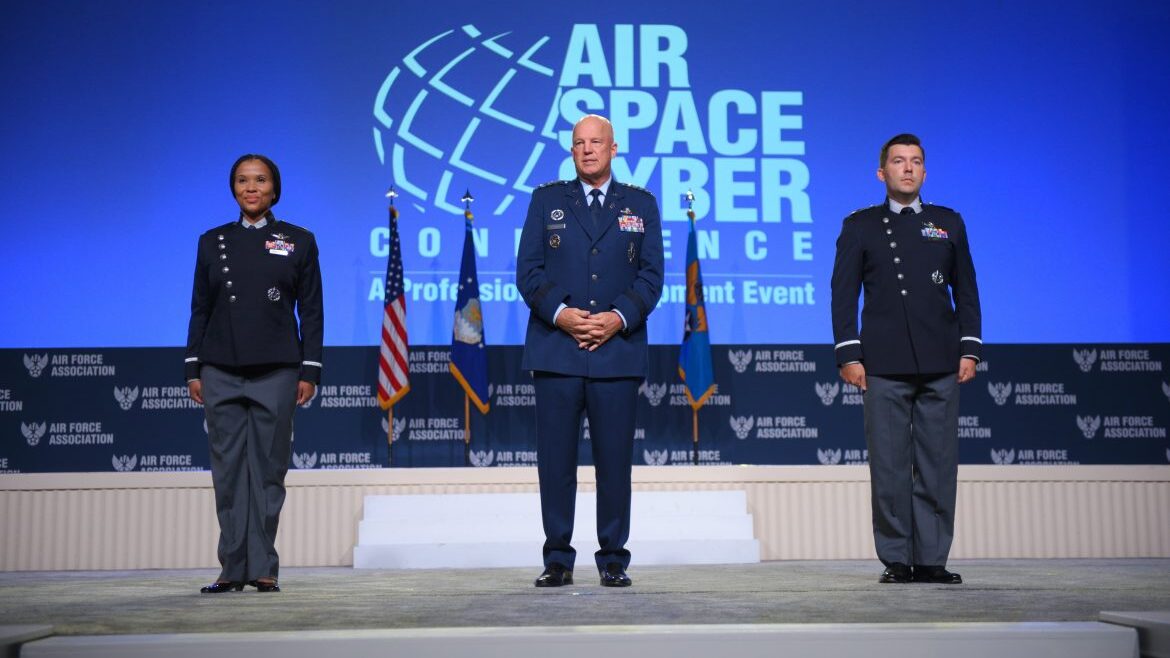
Gen John W. “Jay” Raymond, Chief of Space Operations, speaks at the Air Force Association Air, Space & Cyber conference, Sept. 21, at the Gaylord National Resort and Convention Center. (Mike Tsukamoto)
WASHINGTON: When the idea of a Space Force was being bandied about, one reason often cited for its creation was the need for a clearer lines of control and communication on military space issues. Two years in, the respondents to the Breaking Defense Space Survey seem split on whether that has happened.
Asked how effectively the Intelligence Community, Air Force and Space Force are working together, just under half of respondents, 47.5%, said the three are working “moderately” effectively. “Slightly” effectively grabbed 23.4% of the vote share, “very” effectively got 16% and not effective at al, $8.6 percent. Extremely effective, the most positive option, got only 4.7%.
Interestingly, DoD employees were much more likely to pick “extremely” effective as the option compared to contractors — 11.8% to just 2.2% — perhaps reflecting more support inside the Pentagon than outside for how the integration has gone.
In the following clip, we asked our panel — Victoria Samson of the Secure World Foundation, Makena Young of the Center for Strategic and International Studies, Rosalind Lewis of Aerospace Corp and Breaking Defense’s own space expert, Theresa Hitchens — to weigh in on the issue.
“There are overlaps and there are not well-defined processes for saying who gets the last word, and that’s important,” said Hitchens. “Someone has to make a decision. If all of these decisions are made by committees and committees and committees, then they are often dependent on personality and not actually how they will fulfill the mission.”






















